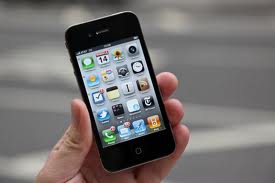  Sales of smartphones have touched reached 101 million at the end of 2010, according to the latest figures from market research company IDC. This is an 87 percent increase from the previous year. This trend represents both an opportunity and a challenge for mobile operators.
It is in this backdrop that Ericsson feels that the adoption of smartphones drives revenue for operators by opening up many more services and applications to subscribers on the move. However, since smartphone owners are much bigger users of e-mail, social networking and online video services, smartphones put new demands on coverage, battery life and network capacity.
Ninety-two percent of smartphone users check their e-mail weekly and 55 percent connect to social networks. This user behavior triggers regular data connections for updates, sometimes up to 100 times per hour. For poorly configured networks, this may result in signaling congestion.
Ericsson recommends a three-pronged approach to meet this challenge: ensure good HSPA coverage; ensure the highest-available data throughput is available; and introduce new signaling states that handle the shift between idle and connected more efficiently.
By ensuring their networks have the latest features enabled, operators will not only deliver excellent smartphone user experience, they will also benefit from more efficient handling of smartphone data traffic overall.
More specifically, Ericsson has been working closely with ST-Ericsson to ensure that smartphones can take advantage of performance-enhancing features, such as Continuous Packet Connectivity (CPC), as soon as they are available from the network. This feature improves power efficiency by allowing the smartphone transmitter and receiver to be powered down when there is no data to be sent or received, without the need to disconnect from the mobile network.
Smartphone power efficiency and network capacity utilization are also improved by the use of HSPA+ 21Mbps modems, because higher bit rates enable shorter, more efficient data sessions. For the user, 21Mbps modems improve the experience of internet-based services by delivering more than double the speed available from current 7.2Mbps devices.
There are now a number of new signaling states for HSPA that provide faster, more efficient transition from idle to fully connected. Measurements made by Ericsson in live networks have shown that keeping devices in the URA_PCH state – rather than allowing them to drop back to idle mode each time a data transfer is completed – reduces the number of channel establishment requests by more than 50 percent.
Another feature that improves network efficiency is network controlled fast dormancy. Rather than the device “deciding” by itself when to drop down to idle state – which most smartphones do today – this 3GPP-standardized feature returns control to the network. This improves overall efficiency by preventing repeated dormancy and reconnection requests. |